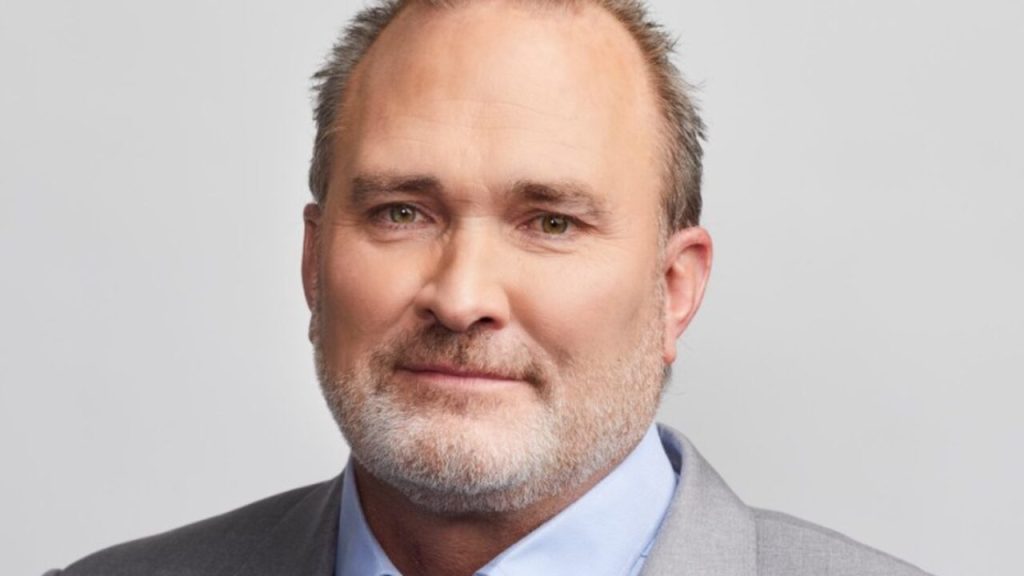The retired Royal Canadian Air Force officer, who previously served as president and CEO of growing defence firm Thales Canada, is just wrapping up his first week as president of Calian Group’s newly created defence and space division.
Already an Insider? Log in
Get Instant Access to This Article
Become an Ottawa Business Journal Insider and get immediate access to all of our Insider-only content and much more.
- Critical Ottawa business news and analysis updated daily.
- Immediate access to all Insider-only content on our website.
- 4 issues per year of the Ottawa Business Journal magazine.
- Special bonus issues like the Ottawa Book of Lists.
- Discounted registration for OBJ’s in-person events.
As defence and security pushes its way to the front of the Canadian economic and political agenda for the first time in decades, Chris Pogue believes Ottawa firms are ready to seize the moment.
And Pogue knows whereof he speaks. The retired Royal Canadian Air Force officer, who previously served as president and CEO of growing defence firm Thales Canada, is just wrapping up his first week as president of Calian Group’s newly created defence and space division.
It’s the latest stop in a varied career that’s seen Pogue hold key leadership roles at major defence players such as MDA and General Dynamics. And it comes amid a renewed global focus on defence and security in Canada and other Western nations as the conflict between Russia and Ukraine grinds on, global trade tensions rise and the U.S.’s commitment to European defence appears to be wavering.
Indeed, the veteran executive is joining Calian – one of the city’s biggest publicly traded companies – at a pivotal time.
CEO Kevin Ford recently told Techopia that restructuring the organization to reflect its expertise in defence and space technology is “the first step” in changing the market’s perception of Calian, adding it’s a “clear market signal” that the business intends to become an even bigger force in those segments.
Now, Pogue has been tasked with getting it there. He recently chatted with Techopia about his latest career opportunity, why he thinks Calian can be a leader in forging a revitalized Canadian defence industry ecosystem and what could make Ottawa the epicentre of that evolution. This is an edited transcript of that conversation.
OBJ: What attracted you to the Calian job when Kevin Ford first approached you about it?
CP: It’s a company that I was aware of and familiar with. But the Calian I knew from a decade ago was obviously not the Calian of today. It’s repositioning itself in the market in a very important and I think impactful way. I’m really excited by the stuff they build. Many companies never get to that next step of, I’ll call it ‘productizing’ their services capability. Once you start to productize the systems that you use to be able to deliver (services), you can now increase the effectiveness by incrementally improving the way people learn. That is a significant transition that the company has made that I think positions it very well. One of the very significant dimensions of the Calian organization is its manufacturing capacity. It has manufacturing capacity that can (encompass) everything from rapid prototyping of a new concept, whether it’s a new type of material or a new type of unmanned system, all the way through to full-scale manufacturing that can be built by Canadians and delivered to Canada and then from there exported. There’s not very many companies that touch defence and space that have that unique combination of all of that.
OBJ: Defence is having a moment after years of seemingly being almost an afterthought among a wide portion of the population. What's your take on that?
CP: We’re in a unique moment in geopolitical tensions around the world. The Canadian public frankly is looking at defence through a lens I don’t remember them looking through as appreciatively (since) perhaps during the Afghanistan conflict. But I think the Canadian public sees defence as an important part of the fabric of Canada. And I think that the government is pivoting their thinking from seeing defence as an expense and more as an investment. I do think there's a lot of evidence that suggests the right kind of investment in defence in Canada in the right ways can actually be a GDP multiplier, not a cost to GDP.
OBJ: Where do Canadian companies, and Calian specifically, fit in to the global defence economy?
CP: I think we’re very well-positioned. I’ve seen the spectrum from different lenses. I think the ecosystem in general in Canada really needs to be pulled together to create an integrated industrial capacity and not a bunch of individual businesses. You have to have in the back of our mind that you’re building an industry – you’re not just building your business. And I think because the Canadian ecosystem, in defence in particular, is so dominated by small businesses, that any company that can help them get their innovation capacity into the defence market will benefit by this unique moment in time that we have. I think Calian is really well-positioned to do that.
OBJ: What are some of the biggest challenges Canadian firms face as they try to make their presence felt on the world stage?
CP: I’m naturally a very optimistic person. I think the pitfalls are that we trap ourselves in the conventional thinking of a decade ago. There is a conventional wisdom sometimes within the procurement organization in Canada that best value is delivered to Canada through competition. And while that’s not untrue, it’s not universally true either. Sometimes competition, when you structure it in such a way that doesn’t allow Canadian innovation to actually get into the market space, you actually prevent new capability from reaching the customer because you are overly focused on ensuring you can have a competition. So the technical differentiator of a highly innovative Canadian company might be lost. So I’m not 100 per cent convinced that philosophy holds.
Having said that, there’s benefit in creating industrial competition around challenges and around creating what is the realm of the possible. If you went back in time in Ukraine five years, I’m not sure anyone would have said, ‘We better become the world leader in UAVs.’ But they had to be, and the way they did it was by having sufficient engineering and industrial innovation capacity in the country that they could rapidly adapt. I think that’s what you’re trying to build.
OBJ: There’s been a lot of talk about the feds moving to more of a ‘Canada first’ procurement strategy in defence. What could be done to improve the current procurement system?
CP: I think the Canadian government is going to want to change the way they do procurement and do things more rapidly and give more freedom for the end-user community to really experiment with Canadian capability. I think of a company like Calian building this industrial capacity, not just its own business capacity – reaching out to all those small businesses and creating that network. My experience has been that when you create that collaborative ecosystem, innovation just naturally emerges, because the best ideas are the ideas of many, not the ideas of just a few. If you have a company like Calian that has good customer intimacy and contact, is delivering value, it can build that mechanism by which that innovation can reach the customer. Canada really needs to become the first buyer in that process.
OBJ: What are some of the areas in which Canada can lead in defence technology?
CP: I’m not saying that we should build everything by singularly Canadian companies. That’s a bit impractical and I think that's not even in our best interest. But there are selected areas that I think Canada can lead the world in. It leads by taking advantage of the existing investments we’ve already made – AI and augmented intelligence, cyber and some of the work that we're doing through those various ecosystems. I do think autonomous systems are a place where Canada can play a significant global leadership role. I would argue that the most inhospitable environment to operate in is the Arctic. It’s like being on the Moon. The ability for Canada to lead the world in Arctic sovereignty, multi-domain awareness, surveillance and dual-use technologies that actually allow the Arctic to be a fully integrated member of this industrial expansion and GDP growth, that’s right in front of us. At the same time, we demonstrate Canadian sovereignty. That’s a north star for us in terms of where I think Canadian industry can focus its energy.
OBJ: Ottawa has a growing number of innovative defence companies as well as sophisticated infrastructure such as Area X.O, a testing ground for drones and other cutting-edge unmanned vehicles. Where do you see its biggest opportunities to shine?
CP: The NATO DIANA initiative (the Defence Innovation Accelerator for the North Atlantic) has one of its testing facilities at Area X.O. That’s an absolutely perfect example of a Canadian investment in infrastructure that can be leveraged to develop increasing innovation capacity in Ottawa to anywhere across Canada. Those are the kinds of places I think are why Ottawa is particularly well-positioned. Also, it’s a centre of decision-making. Most of the other partner companies you’re going to work with to scale this capacity in Canada also have some footprint in Ottawa. General Dynamics, MDA, Lockheed Martin, Thales, Raytheon – these companies are all in this ecosystem. And I do think there’s an opportunity to work effectively together.





